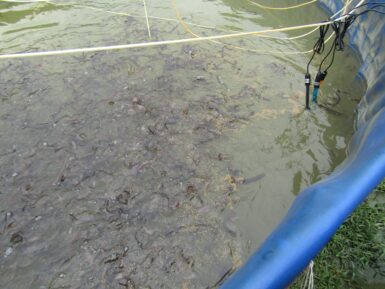
Overview
Write messages and add graphics with this shield.
A ready to use library with examples and methods is available for use to easily write static and scrollable text.
You can use this shield to show values from your board and is controllable from the Arduino IoT cloud. No need of solder, or special adapters, just plug the RGB matrix shield on top of your favourite MKR board and you are ready to go!
The mounted LED's are very dense and bright, with full RGB colours!
Don't miss our getting started guide that explains everything you need to use the shield!
Tech specs
| LEDs | 84 RGB APA102 |
| Input Volatge | 5V |
| Operating Voltage | 3.3V |
| Maximum Current | 2.5A |
| Communication | SPI |
| Length | 61.5 mm |
| Width | 27 mm |
| Weight | 32 gr. |
Conformities
Resources for Safety and Products
Manufacturer Information
The production information includes the address and related details of the product manufacturer.
Arduino S.r.l.
Via Andrea Appiani, 25
Monza, MB, IT, 20900
https://www.arduino.cc/
Responsible Person in the EU
An EU-based economic operator who ensures the product's compliance with the required regulations.
Arduino S.r.l.
Via Andrea Appiani, 25
Monza, MB, IT, 20900
Phone: +39 0113157477
Email: support@arduino.cc
Documentation
OSH: Schematics
The Arduino MKR RGB Sheld is open-source hardware! You can build your own board using the following files:
EAGLE FILES IN .ZIP SCHEMATICS IN .PDFLearn more
Get Inspired
How to realize a servo and water sensor function using simple raw materials.

With the Earth’s population still on track to increase by another two billion people by the year 2050, finding ways to feed them without causing grave harm to the environment is a top priority. Currently, fish is one of the most widely consumed foods in the world, and a new technology called biofloc helps provide both a food source and environmental stabilizer to fishponds without the need for dangerous chemicals/processes. As part of element14’s Just Encase Design Challenge, Md. Khairul Taifur had the idea to create a device that could sit within a pond and report detailed telemetry for environmental markers, as well as correct minor water quality issues via the use of a heater and water pump. His system is based around a MKR WAN 1300, which is responsible for collecting data from each sensor and then sending it to the cloud with its onboard LoRaWAN module. To make the system independent from an external power source, Taifur included a small 5V solar panel, power management board, and rechargeable battery pack. Once his firmware had been finalized, everything was carefully placed inside of a waterproof electrical box and sealed to only expose the sensors. This biofloc monitoring system has great potential as a proof-of-concept of how future fish farms might operate in a more sustainable manner. You can read more about the project here on element14.








